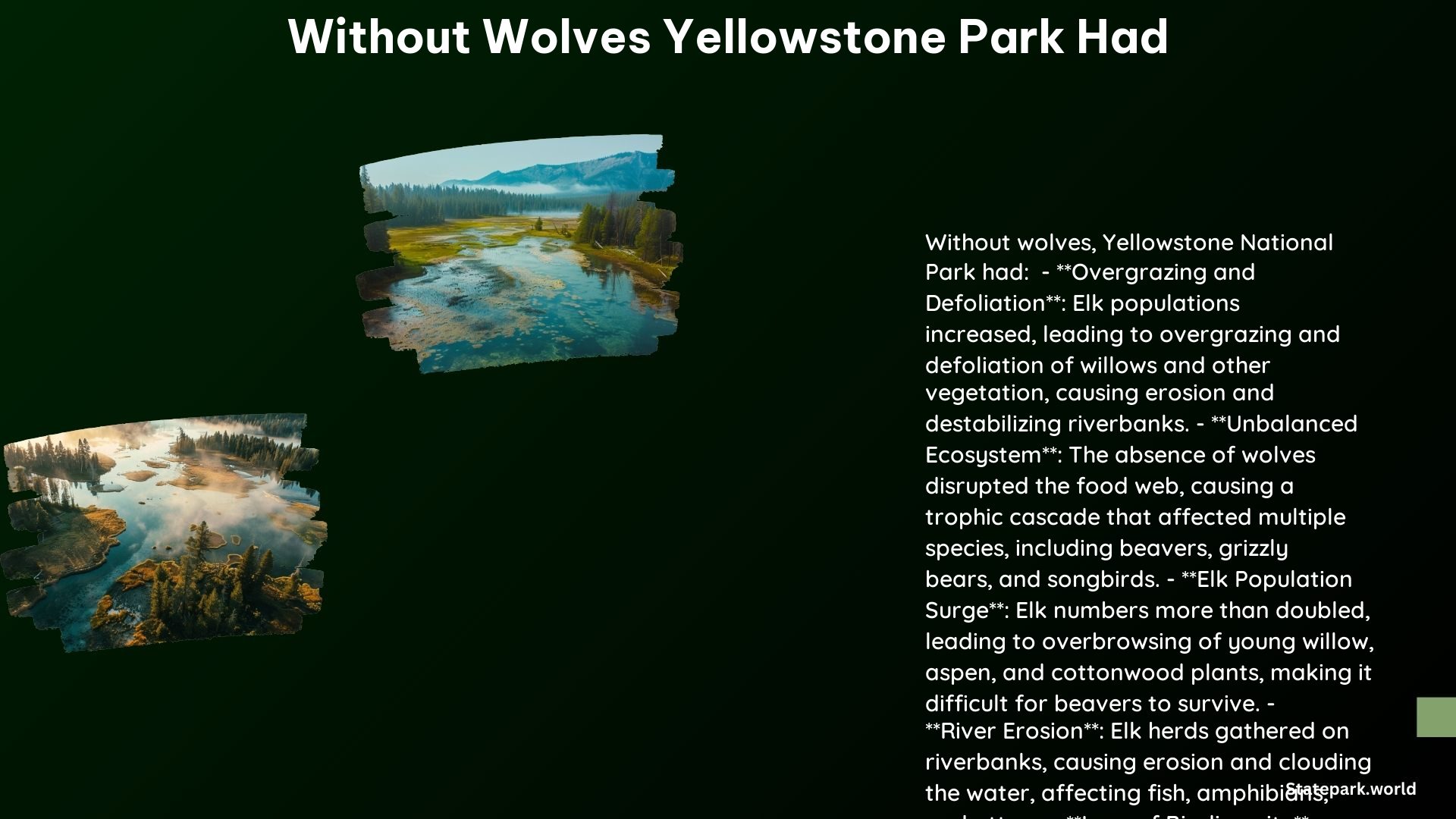Yellowstone National Park, one of the most iconic natural wonders in the United States, experienced significant ecological imbalances and changes when wolves were absent from the region. The removal of these apex predators had far-reaching consequences that disrupted the delicate balance of the park’s ecosystem.
The Trophic Cascade Effect
The absence of wolves led to a surge in elk populations, which in turn caused widespread overgrazing of vegetation such as willows and aspens. This overgrazing resulted in the destabilization of riverbanks and increased erosion, profoundly impacting the park’s landscape.
Additionally, the lack of wolves allowed coyote populations to thrive, further disrupting the ecosystem’s natural order.
Altered Prey Behavior

Without the presence of wolves, elk and deer populations became less vigilant and more sedentary, leading to concentrated overgrazing in specific areas. This lack of predation pressure allowed them to move freely without fear, causing further ecological damage.
Impacts on Other Species
The decline of willows and aspens had a cascading effect on other species, such as beavers, which rely on these plants for their survival. The absence of wolves also led to a decline in biodiversity, including songbirds, eagles, and other wildlife.
Economic and Conservation Implications
The reintroduction of wolves to Yellowstone has been economically beneficial, as wolf ecotourism has attracted millions of dollars annually to the region. Additionally, the successful reestablishment of wolf populations in Yellowstone serves as a beacon of hope for biodiversity conservation efforts globally.
Historical Context
Wolves were systematically eliminated from Yellowstone in the early 20th century, with at least 136 wolves killed between 1914 and 1926. It took over two decades to reintroduce wolves to the park due to deep-rooted divisions over their presence, despite the Endangered Species Act of 1973 listing wolves as a protected species.
The absence of wolves in Yellowstone National Park had far-reaching consequences, leading to a trophic cascade that disrupted the delicate balance of the ecosystem. The reintroduction of wolves has been a significant step in restoring the park’s natural order and biodiversity, serving as a testament to the importance of apex predators in maintaining a healthy and thriving ecosystem.
